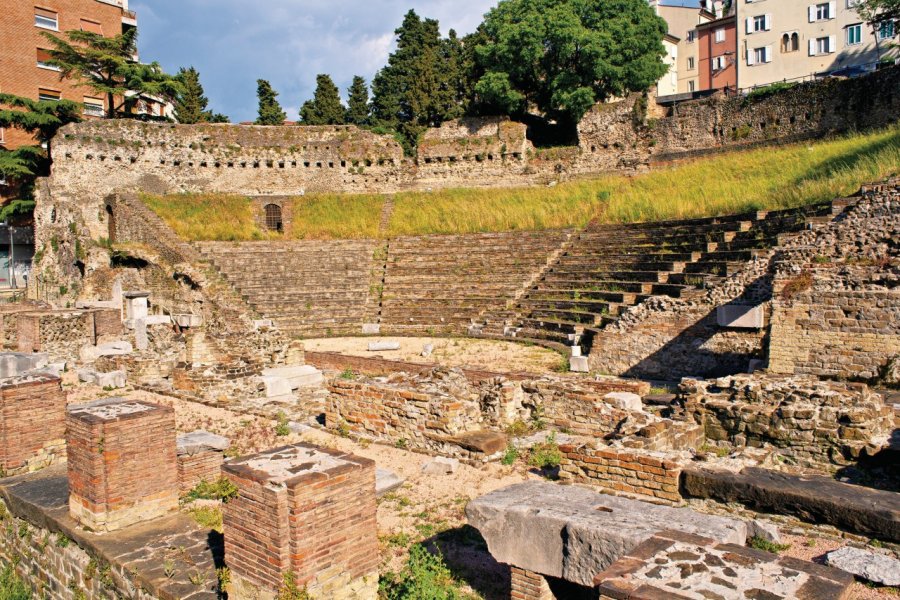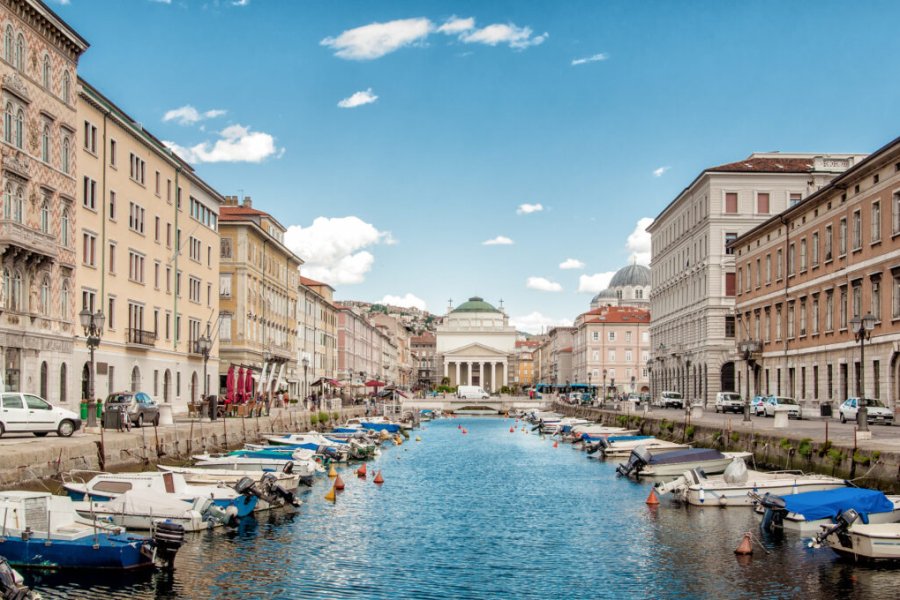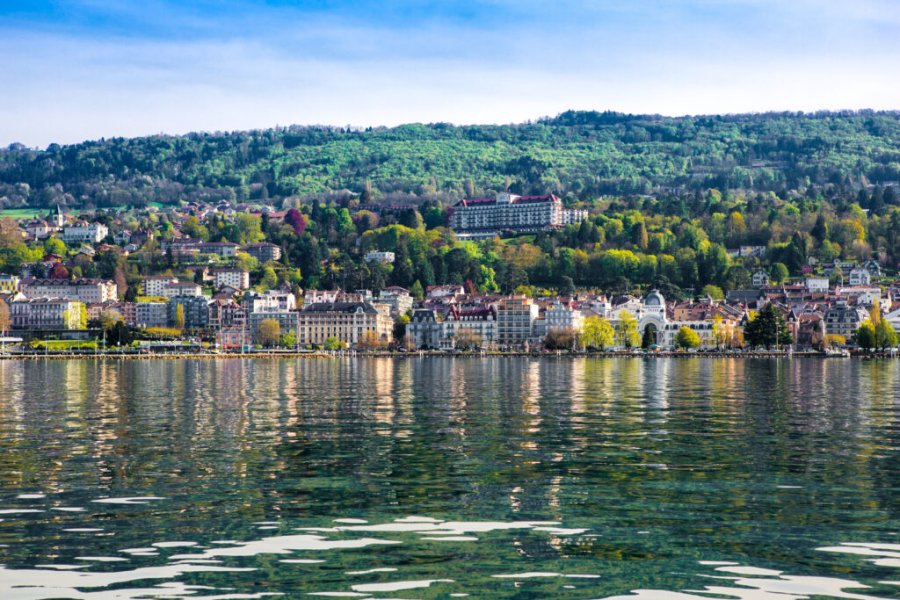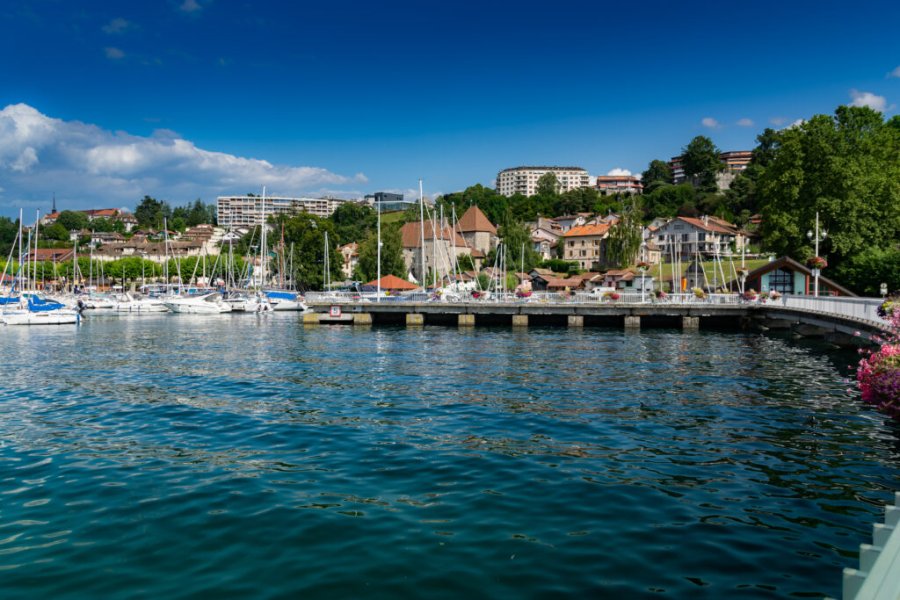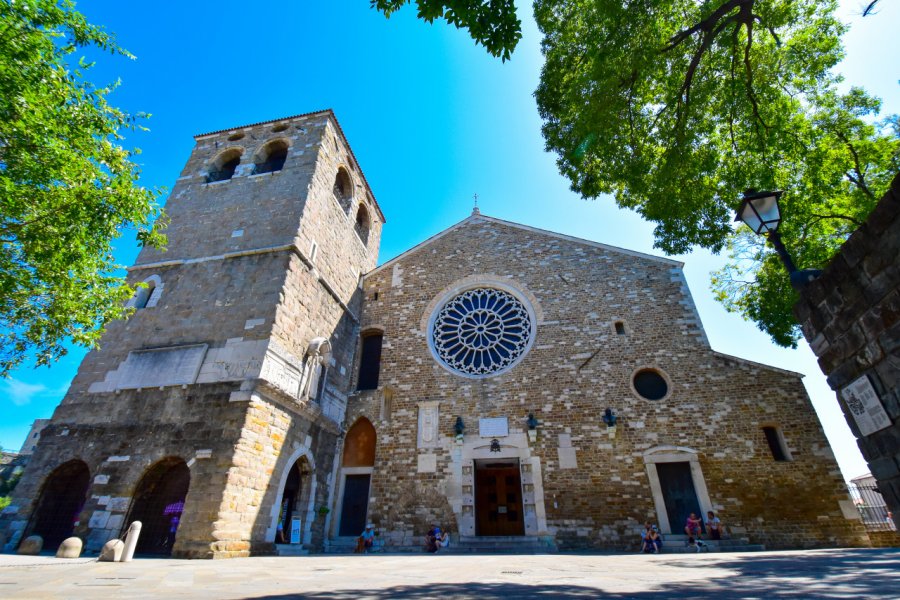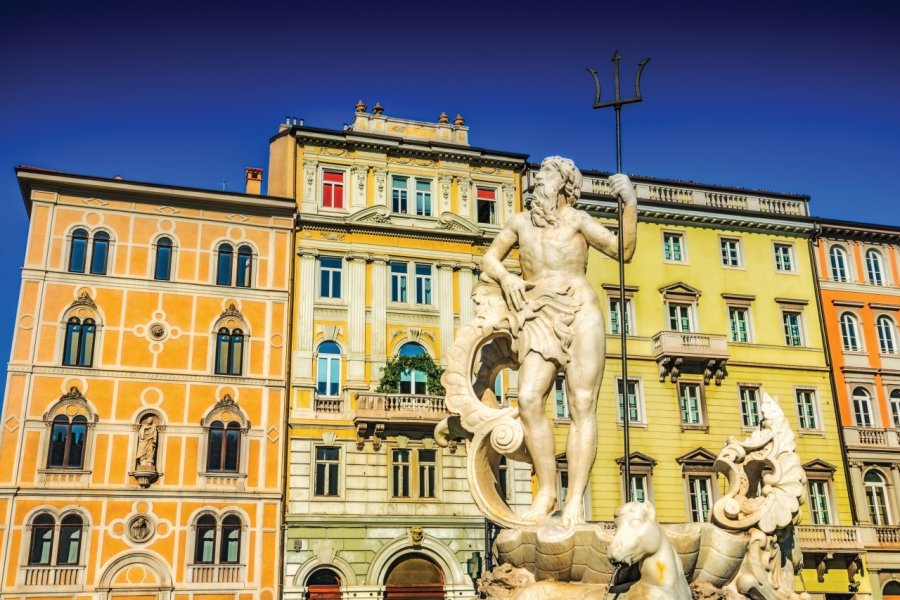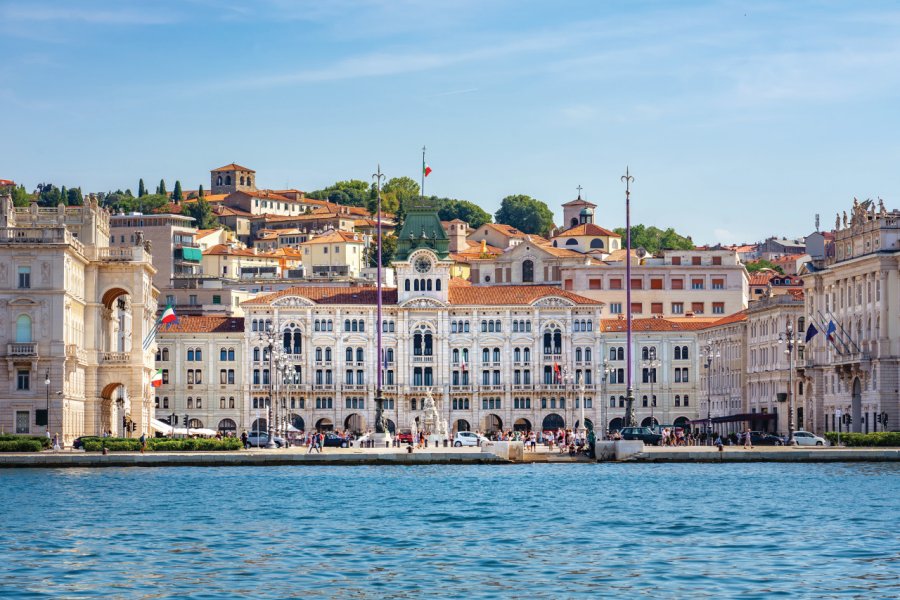Travel Guide Trieste
Jo napot! means "Good morning" in the Trieste dialect. This cheerful greeting is a fine example of Trieste 's multicultural influence. It reflects the region's Slavic roots. It's a phrase you'll often hear in the city's bustling streets, and it's a testament to the hospitality and friendliness of the Triestinians. On the shores of the Adriatic Sea, the Trieste tourist guide takes you through the streets of a city with many charms and a fascinating past. Located at the north-eastern tip of Italy, in Friuli-Venezia Giulia, Trieste is a cultural crossroads marked by its history as a port of the Austro-Hungarian Empire. This influence can be felt in its elegant architecture and historic cafés, where a simple caffè becomes a cultural experience.
Indeed, this Italian city has played ping-pong with different influences over the centuries. In 1382, fed up with its strained relations with Venice, it opted to become Austrian. Then, after the First World War in 1918, it made a triumphant return to Italy. Thanks to its strategic position and state-of-the-art infrastructure, Trieste has become one of the biggest ports on the Mediterranean . This cosmopolitan city has woven a unique character, marked by an exquisite fusion of Slovenian traditions and Germanic architecture. It's a cultural mix that makes Trieste absolutely irresistible, and one that we urge you to explore.
The Piazza Unità d' Italia, one of Europe's largest squares facing the sea, is a must-see, especially at sunset. Not far away, the Castello di Miramare, with its lush gardens and breathtaking view over the gulf, is a reminder of royal and amorous intrigues. For history buffs, the Museo Revoltella showcases modern and contemporary art, while the Teatro Romano evokes the city's Roman past. A detour to the Caffè San Marco, a literary institution, will take you back to Trieste's golden age. Don't miss a stroll along the Molo Audace, a quay with magnificent sea views, and a visit to the Serbian Orthodox church of San Spiridione. For nature lovers, the Duino cliffs and the Rilke trail offer sublime views.
Finally, Triestine's gastronomy, a blend of Italian, Slavic and Austro-Hungarian flavours, will delight your taste buds in the city's finest restaurants . From the traditional jota, a bean and sauerkraut soup, to the delicious gubana, a walnut and raisin cake, Trieste is a feast for the senses. And if you want to relax after exploring the city, the Trieste travel guide has selected the most beautiful hotels for you to stay in, as well as all the sites to discover.
What to visit Trieste?
Suggested addresses Trieste
When to go to Trieste?
When should you visit Trieste? On the Adriatic coast, this Italian city surprises visitors all year round, so here's our smart advice:
Mild spring in Trieste: April and May are charming months to visit Trieste. With a pleasant climate and few tourists, it's the perfect time to stroll its picturesque streets. As an added bonus, prices are lower during this off-season period!
Festive summer : from June to August, Trieste vibrates to the rhythm of the high season. The days are long and sunny, ideal for enjoying the beaches and the festive atmosphere. However, this is also the time when the city welcomes the most visitors, which is reflected in the higher accommodation prices.
Cultural autumn: September and October are Trieste's secret months. With the weather still mild and fewer crowds, it's the ideal time to explore the city's culture and history. Prices drop, making the city more accessible.
Peaceful winter in Trieste : from November to March, Trieste is decked out in tranquillity. This is the low season, with cooler temperatures and lower prices. It's the perfect time to discover Trieste without the tourist hustle and bustle, and enjoy its cosy cafés and museums.
Each season offers a different face of this magnificent city. It's up to you to choose, come and return!
Weather at the moment
Trieste is located in northeastern Italy, and enjoys a Mediterranean climate with continental influences. The weather in Trieste varies pleasantly with the seasons:
Spring : from March to May, temperatures start to warm up, bringing a mild, pleasant climate. This is an ideal time to visit Trieste before the high season.
Summer: June to August represent the high season in Trieste. Temperatures rise to 30°C, perfect for enjoying the sea and the sun!
Autumn: September and October see the transition to the low season. Trieste enjoys cooler temperatures and a comfortable climate, ideal for exploring the city without the crowds.
Winter: from November to February, Trieste experiences colder temperatures, with averages around 5°C. This is the low season, so you can explore the city in peace and quiet.
The temperature in Trieste is therefore moderate, with hot, dry summers and cool, wet winters. This Mediterranean climate makes Trieste a pleasant destination all year round, as each season reveals its own unique Italian charm.
What's the budget for a vacation in Trieste?
This charming Italian city offers something for every budget. Trieste is an affordable destination compared to other Italian tourist cities. In Italy, theeuro is the prevailing currency. In Trieste, you can easily take out credit cards and have some change for small shops or local markets. Don't hesitate to leave a few coins for tips when the service is well done.
Trieste offers many affordable accommodation options, from youth hostels to vacation rentals. The city also offers free or low-cost activities, such as visits to its historic sites. For an average budget, you can enjoy comfortable hotels and restaurants serving delicious local cuisine. Alternatively, Trieste offerstop-of-the-range hotels and gourmet restaurants for an exceptional discovery experience. The Italian city adapts to different budgets, so get packing!
Set course for Trieste! To get there, here are the papers and formalities to prepare:
Good news! If you're a citizen of the European Union, you don't need a visa to visit Trieste. A valid identity card or passport is all you need to enter Italy.
For travelers from outside the EU, the rules vary. Most countries require a Schengen visa to enter Italy. Check with the Italian embassy in your country for specific details.
Make sure your passport is valid for at least six months beyond your planned return date.
Even if it's not compulsory, it's always a good idea to take out travel insurance to cover unforeseen health or other contingencies.
If you plan to rent a car to explore the beautiful region around Trieste, don't forget your international driving license.
Trieste, like all of Italy, uses the euro. And for customs, standard EU rules apply. No surprises there!
Getting to Trieste requires few formalities, especially if you're in the EU. A little preparation and you're ready for an unforgettable adventure!
Going to Trieste doesn't pose any major health problems, so here's just what you need to be aware of:
No specific vaccinations are required to visit Trieste. However, it's always a good idea to check that your usual vaccinations (tetanus, hepatitis B) are up to date. And don't forget your European Health Insurance Card if you're coming from the EU!
Tap water in Trieste is safe to drink and of good quality. So you don't have to worry about filling your water bottle. It's ecological and economical!
Although Trieste is a relatively safe destination, with a modern and reliable medical infrastructure, take out travel insurance to cover any medical or other contingencies.
Don't forget to check the weather before you leave. Trieste can be quite hot in summer and cool in winter. Pack accordingly!
Take your basic first-aid kit, good shoes and sunglasses to make the most of your stay!
Practical information
- When to travel?
- Weather forecast
- Budget
- Formalities
- Health
- How to travel by yourself?
- How to get organized?
- Getting around
Media
How to go to Trieste? Our advice & tips
An organized trip to Trieste is guaranteed to be a hassle-free getaway with lots to discover! Here are a few tips to make the most of your organized trip to this enchanting Italian city:
Opt for an operator specializing in cultural tours. Trieste has a rich history and culture, and an expert guide will immerse you in its captivating past.
Some tours focus on specific themes, such as gastronomy, history or art.
Find out when you can travel. Some seasons offer unique advantages, such as fewer crowds in low season or special events in high season.
Check if the tour offers extensions to explore Trieste's surroundings. The region is full of magnificent sites, such as Miramare Castle and nearby Venice.
Going alone in Trieste, in this Italian city on a human scale, is ideal for independent travelers! Stroll its historic streets, enjoy a coffee on a terrace, and discover its hidden treasures at your own pace. Public transport is reliable and inexpensive, making it easy to explore every iconic or secret location. Triestinians are friendly, which increases your chances of meeting new people! With its cultural opulence and delicious cuisine, Trieste is the perfect destination for a serene and rewarding solo adventure.
Benvenuti a Trieste ! To get around Trieste efficiently, here are a few practical tips:
Use public transport: buy a daily or weekly pass for unlimited travel, it's economical and practical.
Discover Trieste by streetcar: don't miss Trieste's historic tramway , which links the city center to the Villa Opicina hill. It's a picturesque experience with spectacular views.
Rent a bike: Trieste offers bike rental options, so enjoy the great outdoors!
Walk to discover the atmosphere of the city.
For greater convenience, especially in the evening or for specific journeys , cabs or car-sharing services are a good option.
Use local transport apps to plan your routes and check timetables in real time.







